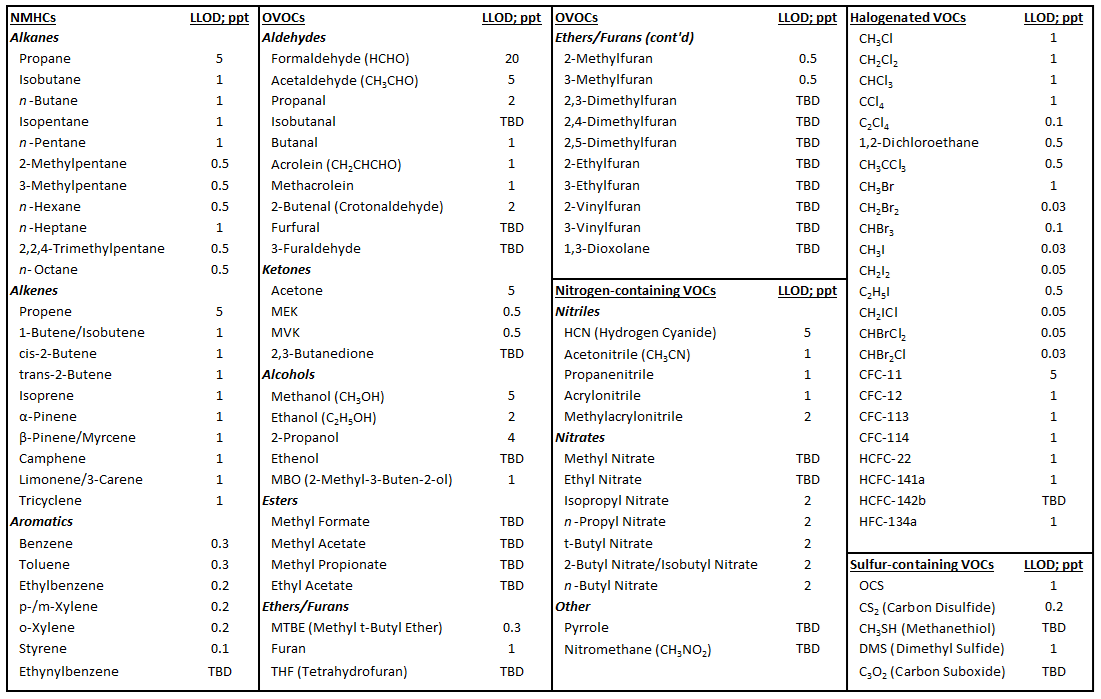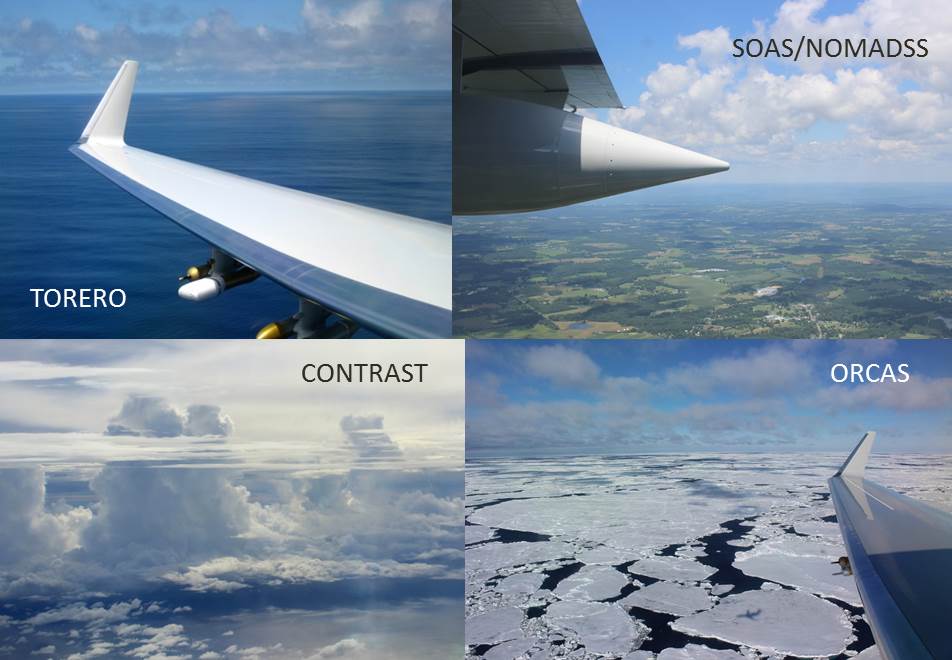VOC Measurements
Volatile organic compounds (VOCs) from a wide array of sources are present in the atmosphere, both directly emitted and formed in situ from the atmospheric degradation of precursor species, with lifetimes that range from a few minutes to hundreds of years. The VOCs we measure fall under several categories, including oil and natural gas tracers, biogenic VOCs, short- and long-lived organohalogens, alkyl nitrates, biomass burning tracers, oceanic emissions, and urban emissions. VOCs can be used to determine the photochemical age of an air mass, the types of oxidants that have impacted an air mass, and the relative contributions from different emission source types on an air mass.
The suite of VOCs that can be measured by TOGA instrumentation has grown each year, and the current VOCs that we have quantified or identified are in the following table with typical lower limits of detection (LLOD).
Table 1. List of TOGA-observed species and typical limits of detection*.

*Note that limits of detection vary by field campaign. Actual LLODs are included in reported datasets.

Clockwise from top left: sampling from the NSF/NCAR G-V in the marine boundary layer of the eastern tropical Pacific Ocean during TORERO, where DMS, CH2Br2, CHBr3, CH2ICl, CH3I and other VOCs are emitted from the ocean; sampling biogenic and anthropogenic emissions over Alabama from the NSF NCAR C-130 during the NOMADSS field campaign; sampling in the marine boundary layer over the marginal ice zone in the Weddell Sea from the NSF NCAR G-V during ORCAS; sampling deep convection in the ITCZ of the western tropical Pacific region during CONTRAST.